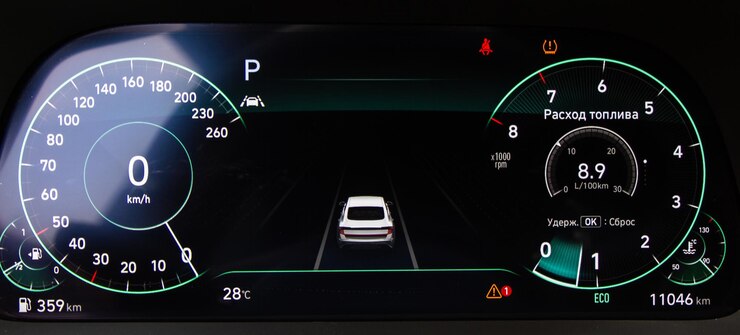Proper tire pressure is essential for maintaining optimal vehicle performance, fuel efficiency, and safety. To help drivers monitor tire pressure, many modern vehicles are equipped with a Tire Pressure Monitoring System (TPMS). This system uses sensors to monitor tire pressure and alerts the driver when tire pressure falls below the recommended level. When an issue is detected, a warning light illuminates on the dashboard. In this article, we will explore the importance of tire pressure alert system warning lights and provide troubleshooting tips to help you address common issues.
Importance of Tire Pressure Alert System Warning Lights:
- Safety: Adequate tire pressure is crucial for safe driving. Insufficient tire pressure can lead to decreased traction, compromised handling, and increased braking distances. It can also increase the risk of tire blowouts or other tire-related incidents. The tire pressure alert system warning light serves as an important safety feature by notifying drivers when tire pressure is outside the recommended range, allowing them to take corrective action before it affects vehicle performance or safety.
- Tire Longevity: Properly inflated tires last longer. Underinflated or overinflated tires experience uneven wear, leading to premature tire wear and the need for replacement sooner than expected. The tire pressure alert system warning light helps you maintain the correct tire pressure, thereby extending the lifespan of your tires and saving you money in the long run.
- Fuel Efficiency: Inflated tires can improve fuel efficiency. Underinflated tires create more rolling resistance, which requires the engine to work harder and consume more fuel. Keeping your tires properly inflated based on the manufacturer’s recommendations, as indicated by the tire pressure alert system, can help optimize fuel efficiency and reduce your overall fuel costs.
Troubleshooting Tire Pressure Alert System Warning Lights:
- Check Tire Pressure: If the tire pressure alert system warning light illuminates, the first step is to manually check the tire pressure of all four tires using a tire pressure gauge. Compare the measured pressure with the recommended pressure specified in the vehicle’s manual or on a sticker located on the driver’s side door jamb. Adjust the tire pressure as necessary, ensuring that all tires are properly inflated.
- Inspect for Tire Damage: While checking the tire pressure, inspect the tires for any signs of damage, such as cuts, bulges, or punctures. Damaged tires can lead to air leakage and result in low tire pressure. If you notice any significant damage, it may be necessary to replace the affected tire.
- Inspect Valve Stems: Ensure that the valve stems, which allow for inflation and deflation of the tires, are properly seated and free from leaks. Faulty or damaged valve stems can cause air leakage, resulting in low tire pressure. If you suspect a faulty valve stem, it is advisable to have it replaced by a professional.
- Reset the TPMS: After adjusting the tire pressure or addressing any tire-related issues, it may be necessary to reset the TPMS. Refer to your vehicle’s manual for instructions on how to reset the system. The process typically involves pressing a reset button or using a TPMS tool. Resetting the TPMS clears any previous warnings and allows the system to recalibrate based on the updated tire pressure readings.
- Sensor Replacement: If the tire pressure alert system warning light persists after troubleshooting, there may be a malfunctioning sensor. TPMS sensors can wear out over time and require replacement. Consult a professional technician to diagnose and replace any faulty sensors as needed.
Tire Pressure Alert System Warning Lights play a vital role in ensuring vehicle safety, tire longevity, and fuel efficiency. When the warning light illuminates, it is crucial to address the issue promptly. By following the troubleshooting tips mentioned in this article, such as checking tire pressure, inspecting for tire damage, resetting the TPMS, and replacing faulty sensors if necessary, you can effectively troubleshoot tire pressure alert system warning lights. Remember to consult your vehicle’s manual or seek professional assistance for specific instructions and guidance. Regular maintenance and attention to tire pressure will help keep your vehicle running smoothly and ensure a safe and comfortable driving experience.











